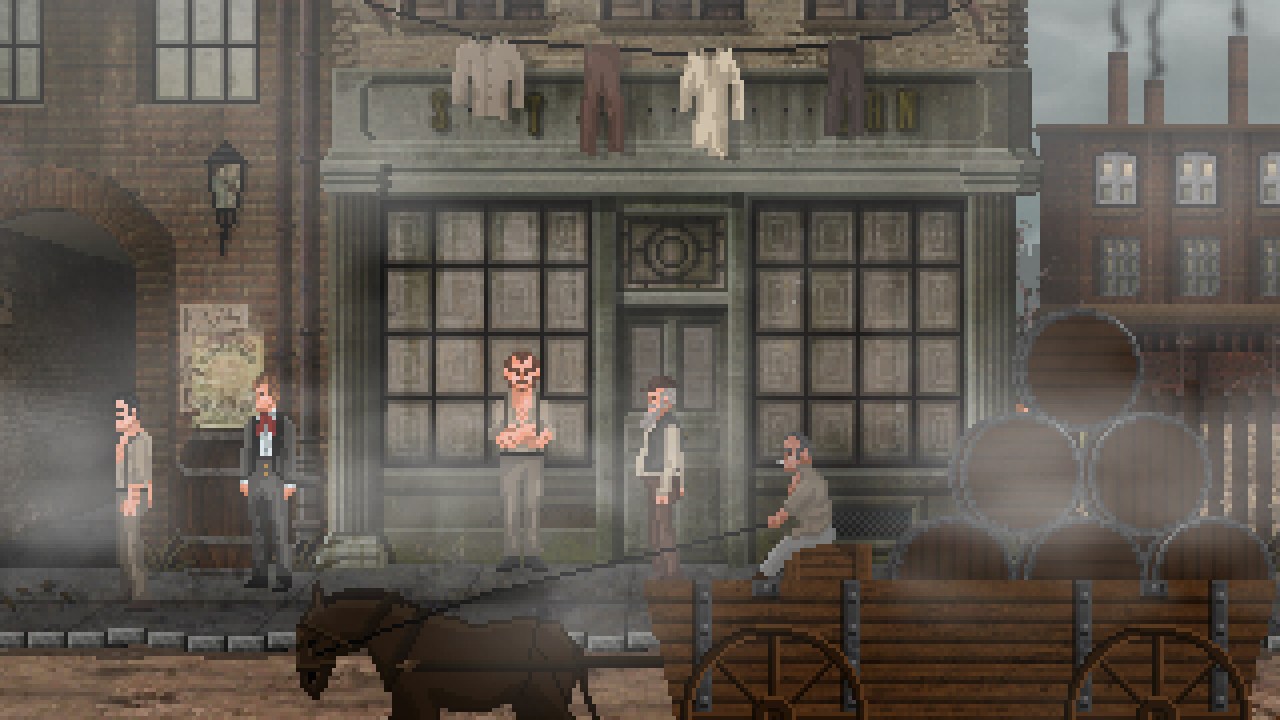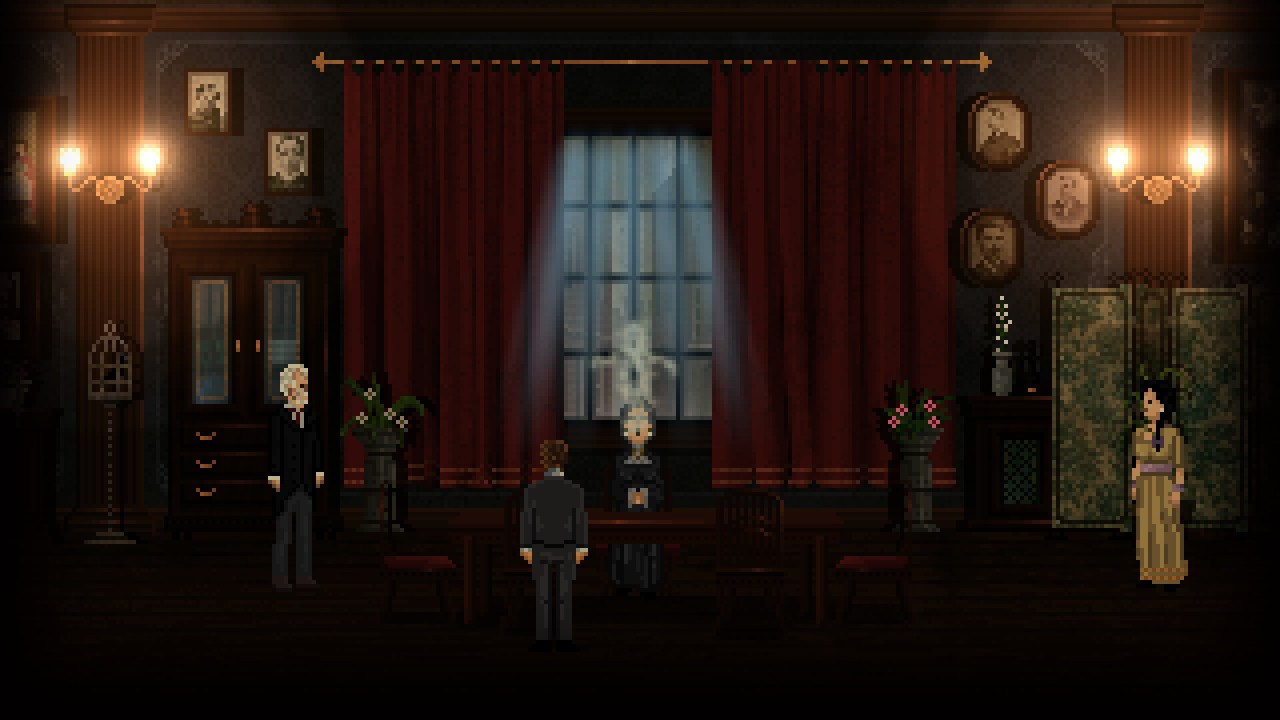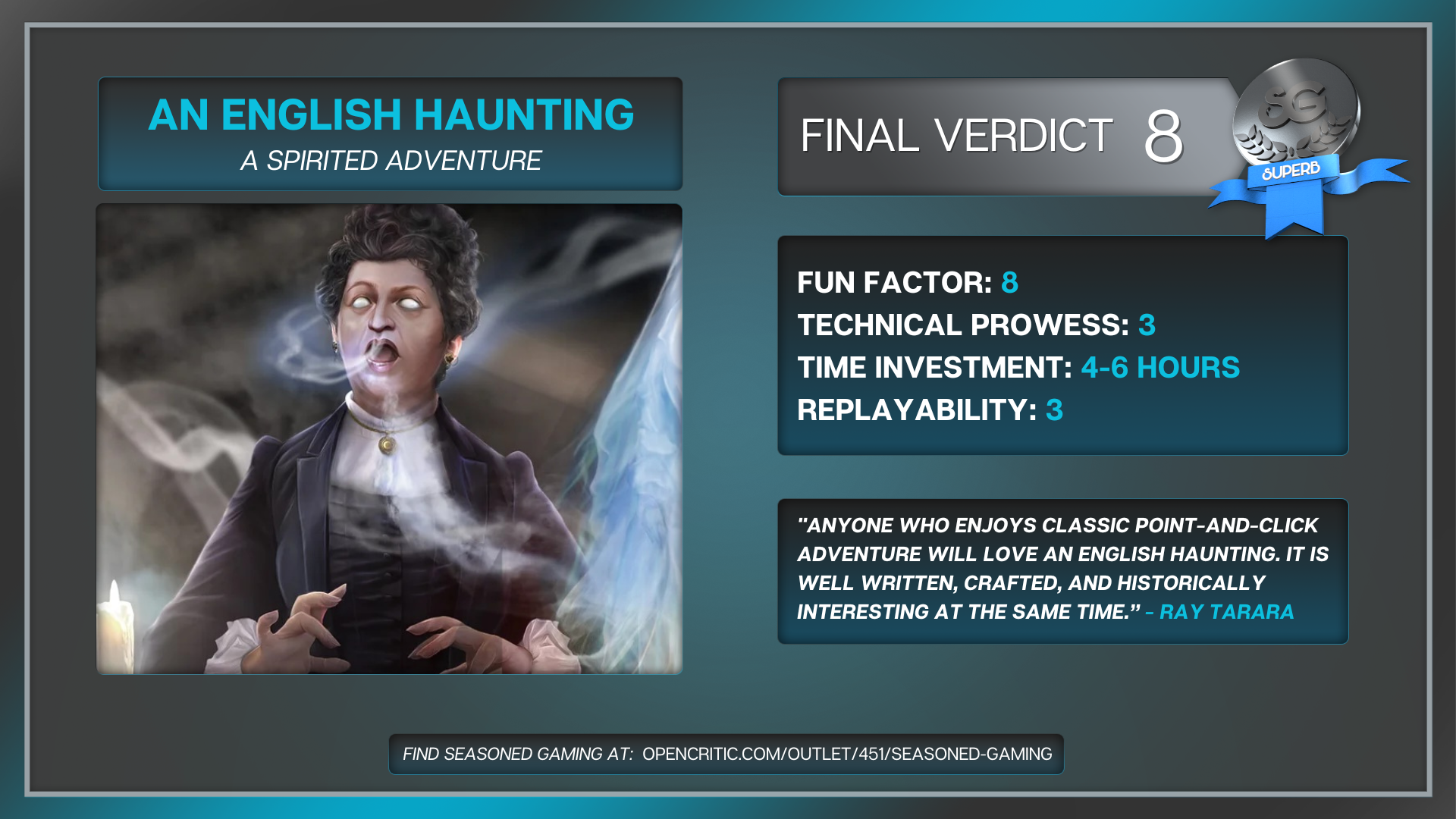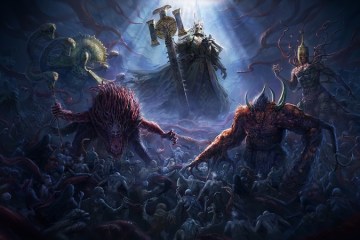An English Haunting is a point-and-click adventure from the solo developer José Meléndez at Postmodern Adventures. The story takes place in England at the turn of the 20th century as spiritualism was becoming more popular in the mainstream. The game also is a wonderful tribute to classic horror literature, referencing many of the greats, such as Algernon Blackwood, Arthur Machen, and Edgar Allan Poe. Anyone growing up with adventure games such as Monkey Island, Indiana Jones and Kings Quest will feel right at home with An English Haunting, and the game deserves a seat alongside those greats. At the very least, it pays homage to all those that came before, emulating the very best from the heyday of the genre while correcting some of the pitfalls common to point-and-click puzzle titles, namely the oftentimes obtuse puzzle design and aimless wandering.
A Spectral Scandal
The game follows Professor Patrick Moore, who works in the controversial metaphysics department at a high-ranking university. With his partner, Nelson Ward, Moore is studying the possibility of an afterlife. The game opens with Ward seemingly having run off with a large university donation intended for the department. Because of this scandal, Moore is told by the chancellor that he has 48 hours to prove the existence of ghosts, or he will shut down the department. These added stakes add a sense of urgency to an adventure that is filled with many unexpected twists and turns along the way.
The beautiful pixel art does a great job of capturing the feeling of classic adventure games while transporting the player to the early 20th century setting. Each location feels detailed, varied, and interesting to explore. Adding to the pixel art is a soundtrack and musical score that fit perfectly with the time period.

Puzzles, Poltergeists, oh my..
An English Haunting is faithful to the point-and-click adventure game formula, and veterans will instantly recognize all the basic mechanics. These include a backpack, where you can grab and examine your items, and lots of clicking across the environment to figure out what you can interact with. There are only a limited number of areas that the player can explore at any given time, which is helpful. Once an area is no longer relevant to your progress in the story, it becomes inaccessible. This focuses the player on one or two puzzles at a time and avoids frustration due to aimless wandering and backtracking often found in other games of the genre.
For the most part, An English Haunting’s puzzles are logical and not too difficult, save for a few moments where I got a little stuck. The restricted exploration elements of the game are, for the most part, effective in mitigating a common pitfall of point-and-click adventures: getting stuck with no idea of how to progress. The story is tightly linked to the puzzles, and the mixture of the two balances well throughout most of the game. Near the end of the game, this balance tips a little more towards story, and puzzles became less of the focus. Considering how enjoyable I found the story throughout, this change in pacing didn’t impact my overall enjoyment.

A Historical Treat
The way that the game draws upon history and themes of spiritualism is a key part of its appeal. There are lots of accurate period details that are woven throughout. I particularly enjoyed the British Association for Supernatural Studies (B.A.S.S.), which seems to be a reference to the real Society for Psychical Research, which still operates to this day in London. The game has fun poking at some of the more absurd beliefs of the time, as well as highlighting how our society has evolved in terms of what is considered worthy of scientific research.
Players will meet a series of colorful fictional characters over the course of the game, including the eager and naive members of B.A.S.S, and Beatrice Shaw, a medium whose flair for spectacle calls into question the depth of her psychic abilities. An English Haunting also includes a few pop-culture historical figures, including Harry Houdini and Arthur Conan Doyle. Houdini was a public critic of spiritualism, and Doyle a vocal champion. Like the various fictional characters Moore meets over the course of the game, Houdini’s and Doyle’s inclusion felt like a great fit, providing contrasting views on spiritualists’ beliefs
I enjoyed An English Haunting immensely, but I don’t believe it’s an experience that is going to win over anyone new to the genre. If you’re not already a fan of point-and-click adventures, this game isn’t likely to convert you. However, I can wholeheartedly recommend giving it a go if you’re one of the increasingly small number of people with a lingering affection for the old-school adventure-game format, or if you are simply interested in the history of the spiritualist movement. An English Haunting had me drawing parallels to another modern addition to the genre, called The Excavation of Hobb’s Barrow, which is another incredibly worthwhile title to check out.
Anyone who enjoys classic point-and-click adventure games will love An English Haunting. It’s a short (five hours or so) adventure with an epic and worthwhile conclusion. It is well written, crafted, and historically interesting at the same time. An English Haunting is obviously a labor of love for the developer, and you can see that in every aspect of the game.
You can find Seasoned Gaming’s review policy here




